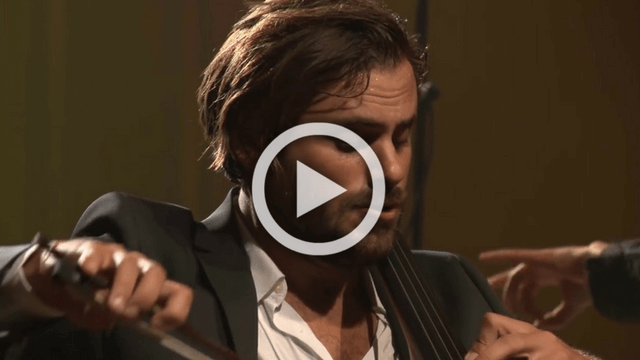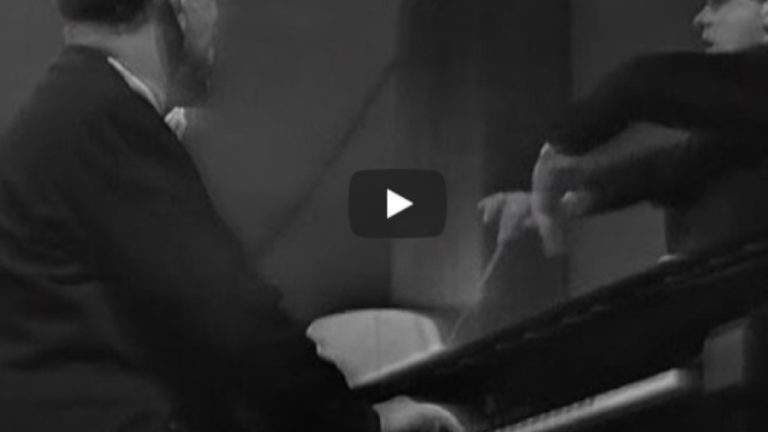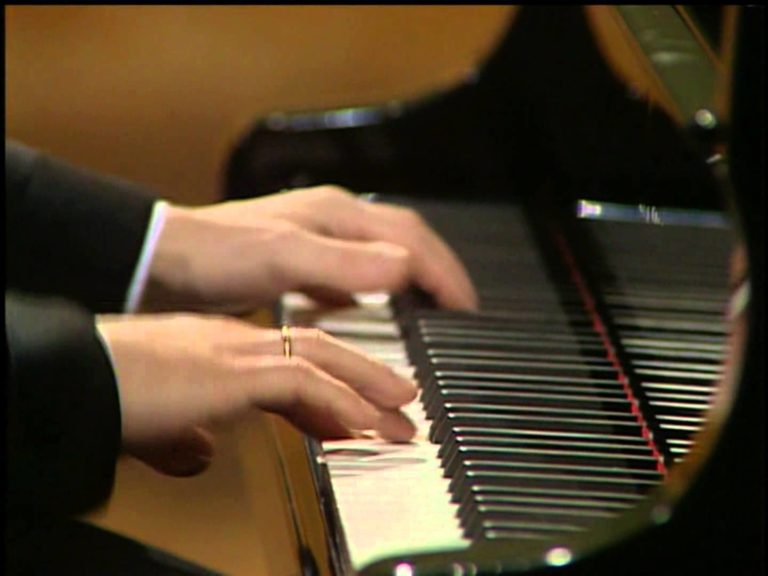14 Mozart pieces you’ve heard but don’t know the name of
Mozart is considered one of the most influential and celebrated composers in the history of classical music. Born in Salzburg, Austria, in 1756, he created over 600 works, including symphonies, operas, chamber music, and choral music. His music is known for its complexity, beauty and emotional depth, and has been enjoyed by audiences around the world for over two centuries.
You are our special guest on this incredible journey through Mozart’s music. Let’s explore Mozart’s top 14 pieces chosen for their popularity, historical significance and musical excellence. From his earliest works, such as Symphony No. 1 and Piano Sonata No. 1, to his later masterpieces, such as Symphony No. 41 and Requiem Mass in D Minor, these pieces showcase Mozart’s incredible talent and creativity.
Whether you’re a longtime classical music fan or new to the genre, this list certainly offers a comprehensive look at Mozart’s best-loved compositions.
Mozart’s early works were heavily influenced by the Baroque style, but he later developed his own unique style, which combined elements from the Baroque, Classical, and Romantic periods.
Despite his immense talent, Mozart struggled financially throughout his life. He was often forced to accept commissions from wealthy patrons in order to survive. He died in 1791, aged 35, leaving a musical legacy that continues to inspire and captivate audiences to this day.
Choosing just a few Mozart songs is definitely not an easy choice. Mozart is one of my favorite composers, I really like his piano sonatas and I appreciate all his concertos for piano and orchestra, but I couldn’t ignore all the other magnificent works by the great Salzburg master. So, after much analysis, here is our pick.
If you like Mozart’s music, share this post so that more people have the opportunity to know or remember the work of this great artist, master of music.
Overall, Mozart’s music is a testament to his genius as a composer. His ability to combine melody, harmony, form and orchestration in a perfect and expressive way is what makes his music so enduring and beloved.
14. Ave verum corpus
“Ave verum corpus” is a Latin hymn that translates to “Hail, true body.” It is a Eucharistic hymn that praises the body of Jesus Christ in the Eucharist. The hymn has been set to music by many composers, including Wolfgang Amadeus Mozart.
13. Symphony No. 25 in G minor
Mozart’s Symphony No. 25 is a masterpiece of the classical era, and Leonard Bernstein’s interpretation of this work is widely regarded as one of the finest recordings of this symphony. Bernstein’s conducting style is characterized by its energy, precision, and attention to detail, and these qualities are on full display in his performance of Symphony No. 25.
The symphony is in G minor, which is a key that Mozart used infrequently, and this gives the work a sense of drama and intensity.
12. Violin Concerto No. 3 in G major
Mozart’s Violin Concerto No. 3 is a beautiful and complex piece of music that showcases the virtuosity of both the violinist and the orchestra. In this particular performance with violinist Hilary Hahn, conductor Gustavo Dudamel, and the Stuttgart Radio Symphony Orchestra, the musicians bring out the nuances and intricacies of the piece with precision and passion.
11. The Magic Flute
The Magic Flute is an opera composed by Wolfgang Amadeus Mozart, with a libretto by Emanuel Schikaneder. It premiered in 1791, and has since become one of Mozart’s most popular and beloved works.
The plot of The Magic Flute is a fairy tale-like story that follows the adventures of Prince Tamino and his friend Papageno, as they embark on a quest to rescue Princess Pamina from the evil Queen of the Night.
10. Piano Concerto No. 21 in C major
Mozart’s Piano Concerto No. 21 in C major, K. 467 is one of his most popular and beloved works. It was composed in 1785 and is known for its beautiful melodies, intricate harmonies, and virtuosic piano writing.
The first movement of the concerto opens with a majestic orchestral introduction, which sets the tone for the entire work. The piano then enters with a series of brilliant runs and arpeggios, showcasing the virtuosity of the soloist. The movement is characterized by its lyrical melodies and playful interplay between the piano and orchestra.
The second movement is a beautiful and melancholic Andante in F major. It features a tender melody played by the piano, which is then echoed by the orchestra. The movement is notable for its use of chromatic harmonies and its emotional depth.
The final movement is a lively Allegro vivace assai in C major. It is characterized by its energetic rhythms, playful melodies, and virtuosic piano writing. The movement features a dazzling cadenza, which allows the soloist to showcase their technical prowess.
9. Mozart Piano Sonata No 16 C major K 545
Mozart’s Piano Sonata No. 16 in C Major, K.545, is a well-known and beloved composition in the classical music repertoire. The sonata was composed in 1788 and is often referred to as the “Sonata facile” or “Easy Sonata” due to its relatively simple structure and melodic themes.
The first movement of the sonata is in sonata form, with a lively and upbeat melody that is instantly recognizable. The second movement is a slow and lyrical Andante in the key of G Major, which provides a beautiful contrast to the first movement. The final movement is a playful and cheerful Allegretto in the key of C Major, which brings the sonata to a satisfying conclusion.
One interesting aspect of this sonata is its use of repetition and variation. Mozart repeats many of the melodic themes throughout the sonata, but each time with subtle variations that keep the music fresh and interesting.
Overall, Mozart’s Piano Sonata No. 16 in C Major, K.545, is a delightful and accessible piece of music that showcases Mozart’s mastery of melody and structure. It remains a popular choice for pianists of all levels, and its enduring popularity is a testament to its timeless appeal.
8. Clarinet Concerto in A major
Mozart’s Clarinet Concerto in A Major is a masterpiece of classical music. It was written in 1791, a few months before Mozart’s death, and is considered one of his greatest works. The concerto is divided into three movements, each with its own character and structure.
The first movement is marked by its lyrical and flowing melody, which is introduced by the clarinet and then developed throughout the movement. The second movement is a beautiful and haunting adagio, marked by its slow tempo and expressive melodies. The third movement is a lively and energetic rondo, featuring a fast tempo and playful melodies.
7. Symphony No. 41 in C major
Mozart’s Symphony No. 41 in C, K. 551, also known as the “Jupiter Symphony,” is widely regarded as one of his greatest and most complex works. It was composed in 1788, during the final year of Mozart’s life, and is the last of his symphonies. The symphony is notable for its grand scale, intricate counterpoint, and use of multiple themes and motifs throughout its four movements.
6. Don Giovanni
Don Giovanni is a two-act opera by Wolfgang Amadeus Mozart. It premiered in 1787 in Prague and tells the story of the infamous seducer Don Giovanni and his eventual downfall. The opera features some of Mozart’s most beloved music, including the famous aria “La ci darem la mano” and the powerful finale “Don Giovanni, a cenar teco.”
5. The Marriage of Figaro
The Marriage of Figaro is an opera buffa (comic opera) composed by Wolfgang Amadeus Mozart in 1786. The libretto was written by Lorenzo Da Ponte and is based on the play “Le Mariage de Figaro” by Pierre Beaumarchais. The opera tells the story of Figaro, the valet to Count Almaviva, who is about to marry his fiancée, Susanna, the Countess’s maid. However, the Count has designs on Susanna and tries to delay the wedding. With the help of the Countess, Susanna and Figaro plot to outwit the Count and expose his infidelity.
The opera is known for its witty and complex plot, as well as its beautiful music, including the famous aria “Non so più cosa son, cosa faccio” and the duet “Sull’aria…che soave zeffiretto”.
4. Piano Sonata No. 11 in A major
Mozart’s Piano Sonata No. 11 in A Major, K. 331, is a three-movement sonata written for solo piano. It was composed in 1783 and is one of Mozart’s most popular piano sonatas.
The first movement, marked “Andante grazioso,” is a theme and variations structure that features a famous melody in the A section.
The second movement, marked “Menuetto,” is a minuet and trio in A minor, which provides a contrast to the major key of the sonata.
The final movement, marked “Alla Turca,” is a lively and energetic rondo in the style of a Turkish march, featuring a catchy melody and imitative sounds of Turkish instruments.
The sonata is known for its technical demands, expressive qualities, and innovative use of harmonies and rhythms.
3. Requiem in D minor
Mozart’s Requiem in D minor is a masterpiece of choral music, composed in 1791 and left unfinished at the time of his death. The piece is a requiem mass, a musical form that is traditionally performed during a funeral mass, and is one of Mozart’s most famous and beloved works.
The Requiem is composed for a four-part choir, soloists, and orchestra, and is divided into fourteen movements. The music is characterized by its dramatic and emotional intensity, as well as its exquisite beauty and complexity. The use of counterpoint, harmony, and orchestration are all masterfully executed, creating a rich and powerful musical experience.
The opening movement, “Requiem aeternam,” sets the tone for the piece with its somber and mournful melody. The subsequent movements explore a range of emotions, from the haunting “Dies irae” to the tender “Lacrimosa.” The “Rex tremendae” and “Confutatis” movements are particularly striking, with their powerful choral passages and dramatic orchestration.
One of the most fascinating aspects of the Requiem is its unfinished nature. Mozart died before he could complete the work, leaving only sketches and notes for the final movements. This has led to much speculation and debate among music scholars and enthusiasts about how the piece should be completed and what Mozart’s original intentions were.
2. Eine Kleine Nachtmusik
Eine Kleine Nachtmusik is a popular serenade composed by Wolfgang Amadeus Mozart in 1787. The title translates to “A Little Night Music” in English. It is one of Mozart’s most well-known and beloved compositions, featuring four movements: Allegro, Romanza, Menuetto, and Rondo.
The piece is scored for a string ensemble consisting of two violins, viola, cello, and double bass. The music is light, graceful, and cheerful, with a memorable melody that has become a staple of classical music repertoire.
1. Symphony No. 40 in G minor
Mozart’s Symphony No. 40 in G minor is a masterpiece of the classical period, composed in 1788. It is one of his most famous works by the great Austrian composer.
The symphony is in four movements, the first movement being the best known. It opens with a haunting, dramatic theme in the strings, which is then repeated and developed throughout the movement. The use of minor key and chromaticism creates a sense of tension and discomfort, which is further intensified by the use of sudden dynamic contrasts and unexpected harmonic shifts.
The second movement is a beautiful and lyrical Romanze, with a simple and elegant melody on the violins. The third movement is a lively and playful Minuet and Trio, which contrasts with the emotional intensity of the first movement. The final movement is a fast and energetic Allegro assai, which brings the symphony to an exciting conclusion.






Piano Concerto in C Major K. 467 – Allegro
Horn Concerto No. 1 in D Major K. 412 – Allegro
Great Mass in C minor K. 427 – Kyrie
Le Nozze di Figaro K. 492 Overture
Serenade No. 13 in G Minor K. 525 – IV. Rondo Allegro
Sonata in C Major K. 279
Piano Sonata No. 16 in C Major K. 545
Symphony No. 40 in G minor K. 550
Symphony No. 25 in G minor K. 183
The Magic Flute – QUEEN OF THE NIGHT
K. 525 is in G major, not G Minor.
Thrilled, absolutely thrilled ! Thank you, guys.
I’m glad you liked it. Thanks for the visit.